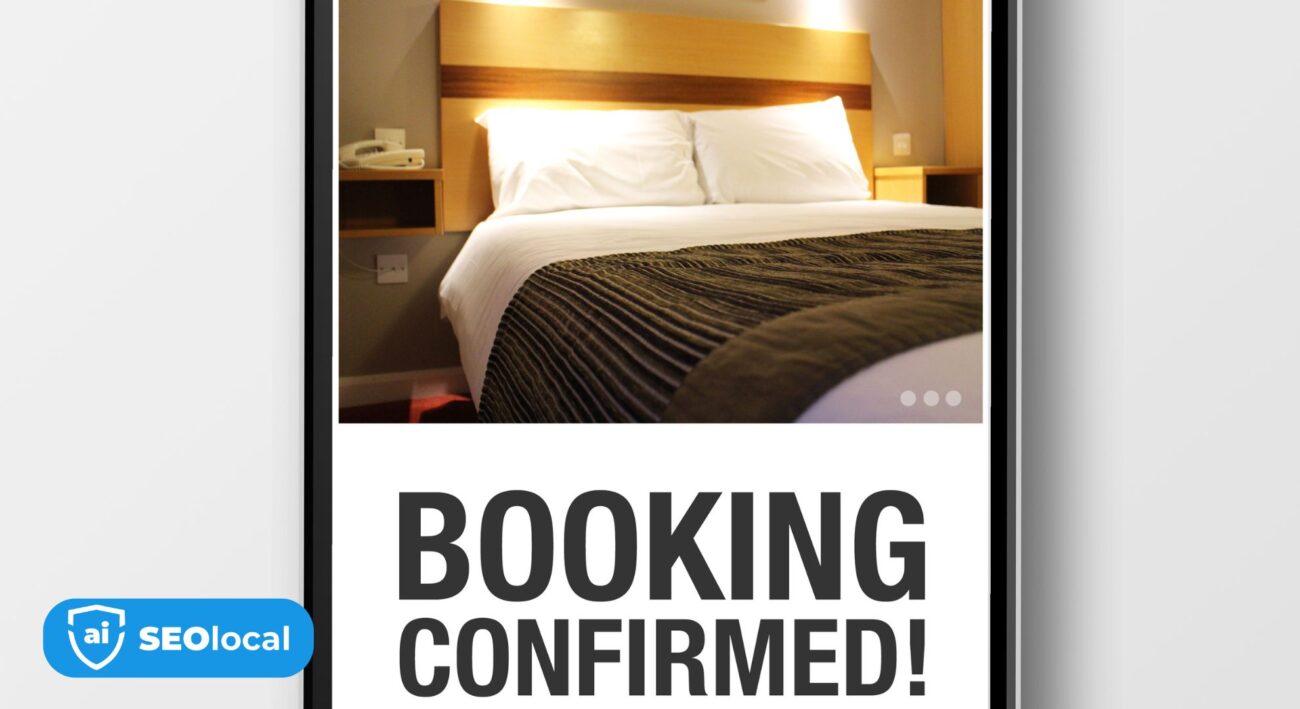- Advanced Local SEO Strategies
- Fundamentals of Local SEO
- Google Business Profile (GBP) Optimization
- Local Keywords and Content Strategy
- Local Link Building
- Local Paid Advertising
- Local Search Ranking Factors
- Local SEO Best Practices
- Local SEO Tools and Analytics
- Local Social Media Marketing
- Online Reviews and Reputation Management
- Technical SEO for Local Businesses
How to localise marketing Effectively

Did you know 37% of consumers prefer shopping experiences tailored to their region? Marketing localization helps brands connect with diverse audiences by adapting messages to regional languages and cultural contexts. This strategy goes beyond translation—it ensures your content resonates with local preferences.
Global brands like Coca-Cola prove its power. Their “Share a Coke” campaign revived Australian sales by 2% after a decade-long decline simply by personalizing bottles with local names. Whether expanding internationally or strengthening regional presence, localization builds trust with your target audience.
SEO Local specializes in refining marketing strategies through precise localization. This guide breaks down actionable steps to adapt your approach for maximum impact.
Key Takeaways
- Marketing localization adjusts content for regional languages and cultures.
- 37% of shoppers favor locally tailored experiences.
- Successful campaigns, like Coca-Cola’s, boost engagement and sales.
- Localization supports both global expansion and community connections.
- SEO Local provides expert strategies for effective adaptation.
Introduction to Marketing Localization
Localized campaigns can boost engagement by 20% compared to generic messaging. Unlike basic translation, marketing localization adapts content to cultural nuances, idioms, and buying habits. This deeper alignment builds trust—brands that master it gain a 20% larger market share.
- Translation changes words; localization reshapes context (e.g., Pepsi’s “Come Alive” slogan mistranslated as “Bring Ancestors Back from the Dead” in China).
- 50% of marketers prioritize localized SEO, per HubSpot, to rank higher in regional searches.
Tools like Smartling’s translation management system cut time-to-market by 42%. They automate workflows while preserving cultural accuracy—critical for fast-paced markets.
Use the 4 P’s framework to enter new regions:
- Product: Adjust features (e.g., Lay’s offers shrimp-flavored chips in Asia).
- Place: Choose platforms popular locally (WeChat in China).
- Price: Align with local purchasing power.
- Promotion: Tailor messaging (Coca-Cola’s Ramadan campaigns in the Middle East).
By refining the localization process, brands unlock potential customers who value authenticity. Lay’s nailed this—their regional flavors drove a 12% sales spike in target markets.
Why Localizing Your Marketing Strategy Matters
Nearly 60% of customers abandon purchases when content isn’t in their language. Ignoring regional preferences risks losing 20% of potential buyers who hesitate to engage with non-localized options. Tailoring your approach bridges this gap, turning reluctance into loyalty.
Unbounce’s German campaign proves the power of cultural alignment. By partnering with local influencer Ben Harmanus, they boosted conversions by 34%. Audiences trusted a familiar face, showcasing how authenticity drives action.
Localized email campaigns also lift retention rates by 40%. Subject lines and offers resonate deeper when reflecting regional idioms or holidays. Similarly, social media content adapted to cultural norms generates 2.5x higher engagement.
Mercedes-Benz mastered this by rebranding from Daimler for global markets. The shift clarified their identity, aligning with local perceptions of luxury. Result? Stronger connections and increased sales worldwide.
- Self-service preference: 60% of customers seek support in their native language.
- Social proof: Regional ambassadors build trust faster than generic messaging.
- Consistency: Adapting every touchpoint—emails, ads, websites—maximizes impact.
Understanding Cultural Nuances in Local Markets
Cultural misunderstandings can derail even the strongest global campaigns. What resonates in one region may offend in another. Mastering these subtleties ensures your brand connects authentically.
Researching Local Preferences
Google Trends uncovers regional search patterns. In Japan, terms like “group harmony” spike during holidays, reflecting collective values. Meanwhile, Latin American searches highlight family-oriented keywords—parents often decide purchases jointly.
South Korea’s academic calendar shifts back-to-school campaigns to February. Ignoring this timing means missing peak demand. Similarly, color symbolism varies: white signals mourning in Asia but purity in Western cultures.
Adapting to Regional Values
Italian espresso culture thrives on slow, social consumption. Brands like Lavazza emphasize tradition. In the U.S., Starbucks dominates with to-go cups—speed matters. Tailoring messaging to these habits boosts relevance.
Consider collective vs. individualistic values. Japanese ads highlight community benefits, while American ones focus on personal gains. These cultural nuances shape how audiences perceive your brand.

How Do You Localise Marketing? A Step-by-Step Approach
Global brands achieve 30% higher engagement by adapting campaigns to regional preferences. A clear localization process eliminates guesswork, ensuring every touchpoint resonates. Follow this framework to connect authentically with diverse audiences.
Identifying Target Markets
Start with granular market research. Analyze demographics, purchasing habits, and cultural values. Tools like Google Analytics reveal regional search trends, while surveys uncover local pain points.
Create detailed buyer personas for each target market. Include:
- Preferred communication channels (e.g., Line in Japan, WhatsApp in Brazil).
- Local holidays or events influencing buying cycles.
- Language dialects or slang terms to adopt/avoid.
Localizing Content and Messaging
Transcreation—not just translation—ensures cultural relevance. For example, KFC’s “Finger-Lickin’ Good” became “Eat Your Fingers Off” in China, preserving intent while fitting local idioms.
- Market Research: Identify regional competitors and gaps.
- Resource Allocation: Assign budgets for translators and local influencers.
- Translation & Transcreation: Adapt slogans, visuals, and CTAs.
- Testing: Run focus groups to validate messaging.
- Optimization: Use A/B tests to refine landing pages.
ActiveCampaign streamlined this workflow with Lokalise, launching multilingual campaigns in just two days. Continuous testing is key—adjust CTAs based on local response rates to maximize conversions.
Key Elements of a Successful Localized Campaign
Consistency across languages and visuals strengthens brand trust in global markets. Red Bull excels here—their regional websites adapt sports content to local favorites while keeping the energy-drink branding unified. This balance ensures recognition without sacrificing relevance.
- Linguistic Precision: Slang or idioms mistranslated can alienate audiences. Work with native speakers to avoid blunders like Pepsi’s China slogan mishap.
- Visual Harmony: Colors and imagery must align with cultural norms. White symbolizes mourning in Asia but purity in the West.
- Localized Payments: Offer Alipay in China or MercadoPago in Latin America. 23% of shoppers abandon carts if their preferred method is missing.
- Legal Compliance: GDPR (Europe) fines non-compliance up to €20 million, while CCPA (California) mandates opt-out options for data sales.
Absolut Vodka’s #SexResponsibly campaign tailored U.S. messaging to emphasize consent, resonating deeper than a generic global rollout. Pair this with regional social proof—local influencers or reviews boost credibility. A Mexican skincare brand saw a 40% sales lift after featuring hometown beauty bloggers.
Every element—from payment options to legal fine print—builds trust. Miss one, and the strategy crumbles.
Website Localization and SEO
Canva expanded to 60M users by adapting its website across 130 languages. This proves localization isn’t just about translation—it’s about optimizing every element for regional search engines and cultural preferences. A tailored approach boosts visibility and engagement.
Translating and Adapting Web Content
Hreflang tags tell search engines which language version to display. For example, a Canadian French page should include <link rel="alternate" hreflang="fr-ca" href="example.com/fr/">. Missing these tags can split your SEO equity across duplicate pages.
Machine-translated metadata often backfires. Google penalizes awkward phrasing, like translating “best price” literally into German (“bester Preis”) instead of using the colloquial “günstigste.” Native linguists ensure accuracy while preserving intent.
Local SEO Strategies
Geo-targeted keywords capture regional quirks. A café chain might target “espresso” in New York but “coffee shop” in Texas. Tools like Ahrefs reveal these variations through localized search volume data.
- Directory Listings: Claim profiles on Yelp, Yellow Pages, or Baidu (China) to appear in “near me” searches.
- Google My Business: Optimize with local keywords, hours, and customer reviews in the dominant language.
- Regional Backlinks: Partner with local bloggers or news sites to build authority.
Lucidchart’s 150+ localized landing pages increased conversions by 22%. Each version adjusted CTAs and visuals—like using hand gestures in Middle Eastern pages, where pointing icons can offend.
Localizing Social Media and Advertising
Social media preferences vary drastically across regions—what works in one country may fail in another. Tailoring content to regional platforms and cultural norms ensures campaigns resonate. McDonald’s exemplifies this, adapting Instagram posts to local tastes, from anime-themed promotions in Japan to football-centric content in Brazil.
Choosing the Right Platforms
Not all social channels have global reach. Prioritize platforms dominant in your target markets:
| Region | Primary Platform | Key Features |
|---|---|---|
| Russia | VK | Group chats, localized ads |
| Japan | LINE | Stickers, payment integration |
| China | Mini-programs, influencer partnerships | |
| Brazil | Direct messaging, broadcast lists |
BMW learned this the hard way. Their UAE ad featuring a distorted national anthem sparked backlash. Researching platform etiquette prevents such missteps.
Creating Culturally Relevant Ads
Humor and idioms rarely translate directly. Kinder Joy’s video ads adjust emotions by market—focusing on family bonds in India and childhood nostalgia in Europe. Key tactics:
- Meme Culture: Integrate local viral trends for relatability.
- Native Copywriters: Pun-heavy slogans need fluent speakers.
- Visual Symbols: Avoid gestures or colors with negative connotations.
Campaigns thrive when they mirror local values. A Mexican beverage brand boosted engagement 30% by using Dia de los Muertos themes.
Common Challenges in Marketing Localization
Global expansion often hits roadblocks when teams overlook regional legalities. From cultural missteps to compliance fines, even seasoned brands stumble. Proactive planning minimizes these risks.
Managing Multiple Stakeholders
Coordinating across departments slows campaigns. Legal, design, and regional teams often clash over messaging. Streamline approval processes with centralized tools like Terminus.
Dolce & Gabbana’s $500M China sales drop shows the cost of misalignment. Their ad campaign offended local sensibilities because cultural reviewers weren’t consulted. Cross-functional teams prevent such blunders.
Navigating Legal and Regulatory Differences
MENA regions ban alcohol ads, while China’s Great Firewall blocks common platforms. Tiger Airways faced $110K fines under Australia’s Spam Act for unlocalized emails. Research regional laws early.
- Technical Barriers: China requires ICP licenses for websites. Missing this delays launches.
- Content Restrictions: Germany bans Nazi references; Singapore limits political speech.
- Data Laws: GDPR (Europe) and CCPA (California) demand localized privacy policies.
Build compliance into your workflow. Assign regional legal experts to review every campaign.
Real-World Examples of Successful Localization
Brands that master localization see a 300% higher engagement in target markets. These campaigns go beyond translation—they embed cultural insights into every touchpoint. Here’s how industry leaders nailed it.
Coca-Cola’s Name-Personalization Strategy
The “Share a Coke” campaign replaced logos with popular local names. In Australia, it revived sales by 2%, selling 250 million bottles. The brand adapted this across 70 countries:
- China: Used nicknames like “Little Star” to reflect familial terms.
- Middle East: Featured Ramadan-themed bottles with Arabic calligraphy.
- Brazil: Included soccer-inspired phrases like “Team Neymar.”
This hyper-local approach made the global brand feel personal.
Red Bull’s Regional Content Variations
Red Bull’s website changes dynamically by country. Austrian pages highlight alpine sports, while U.S. versions focus on urban events like BMX. Key tactics:
- Language Nuances: German site uses slang like “Geil” (awesome) for youth appeal.
- Visuals: Thai pages feature Muay Thai fighters; Spanish ones show bull runs.
- Partnerships: Local athletes and artists star in region-specific content.
Airbnb’s Cuban *casas particulares* listings avoided generic hotel terms. Instead, they emphasized “authentic local stays,” aligning with Cuban tourism laws. Nike tweaked “Just Do It” to “Use Sports” in China, resonating with collective values.
IKEA’s Saudi Arabia catalog adapted to cultural norms—removing images of women and adding prayer room layouts. These examples prove localization isn’t optional—it’s a growth lever.
Tools and Resources for Effective Localization
The right tech stack transforms chaotic localization into a streamlined process. From translation management to cultural adaptation, these resources ensure accuracy and speed.
Translation Management Systems (TMS)
Platforms like Smartling integrate with HubSpot and Salesforce, automating 80% of repetitive tasks. Compare top options:
| Tool | Best For | Key Feature |
|---|---|---|
| Lokalise | Startups | Real-time collaboration |
| Transifex | Enterprise | AI-powered glossaries |
| Phrase | Dev teams | Git integration |
Keyword and Cultural Research
SEMrush identifies regional search trends, like “café” vs. “coffee shop” by location. For cultural insights, Kwintessential offers consultations on gestures, colors, and idioms.
Canva’s design templates adapt to local preferences. Japanese layouts often use minimalist aesthetics, while Brazilian designs favor vibrant colors.
Legal and Compliance
Tools like OneTrust ensure GDPR or CCPA adherence. They auto-update policies when laws change, reducing risk.
- Collaboration: Slack or Trello keeps global teams aligned.
- Testing: UserTesting.com validates localized UX with regional audiences.
With the right tools, your team can localize faster—without losing authenticity.
Getting Started with SEO Local
SEO Local specializes in transforming generic campaigns into region-specific growth engines. Their geo-targeted keyword strategies identify high-intent searches, ensuring your content ranks where it matters most.
Technical SEO audits go beyond translation. Multilingual checks fix hreflang errors, meta tag inconsistencies, and localized schema markup. This prevents duplicate content penalties while boosting visibility.
Local link-building thrives on regional partnerships. Collaborating with hometown influencers or industry blogs builds trust and domain authority. For example:
| Strategy | Impact |
|---|---|
| Geo-keyword optimization | +35% regional traffic |
| Multilingual audits | Faster indexing |
| Local backlinks | Higher trust signals |
Track success with localized analytics. Monitor metrics like bounce rates per region or conversion peaks during local holidays. Adjust campaigns dynamically for maximum ROI.
Ready to refine your strategy? Chat with SEO Local via WhatsApp for a tailored localization plan.
Conclusion
Tailoring your strategy to regional preferences isn’t optional—it’s essential. Brands that prioritize marketing localization see 20-37% higher conversions by building trust with local audiences.
Cultural monitoring must be ongoing. Trends shift, and idioms evolve. While AI tools speed up translations, human oversight ensures nuance isn’t lost. Emerging tech like AR/VR will demand even deeper adaptation.
Success hinges on strategy, not speed. Rushed translations risk alienating customers. Invest in authentic connections, and your brand will thrive globally.
FAQ
What is marketing localization?
Marketing localization tailors campaigns to fit regional preferences, cultural nuances, and language differences. It ensures your brand resonates with local audiences while maintaining a consistent global message.
Why is localizing content important for global brands?
Localized content builds trust, boosts engagement, and improves conversion rates. Brands like Coca-Cola and Red Bull succeed by adapting campaigns to regional tastes, idioms, and cultural references.
How does localization impact SEO?
Local SEO strategies, such as geo-targeted keywords and translated metadata, help search engines rank your content for regional audiences. This drives organic traffic from local markets.
What tools help with marketing localization?
Tools like Smartling, Lokalise, and Google’s Market Finder streamline translation, cultural adaptation, and regional keyword research for efficient campaign scaling.
How do you adapt ads for different cultures?
Research local values, humor, and taboos. For example, McDonald’s adjusts menus and imagery—offering rice dishes in Asia or halal options in the Middle East—to align with regional preferences.
What are common localization challenges?
Balancing brand consistency with regional customization, managing multilingual teams, and complying with local regulations (like GDPR in Europe) require careful planning and resources.



